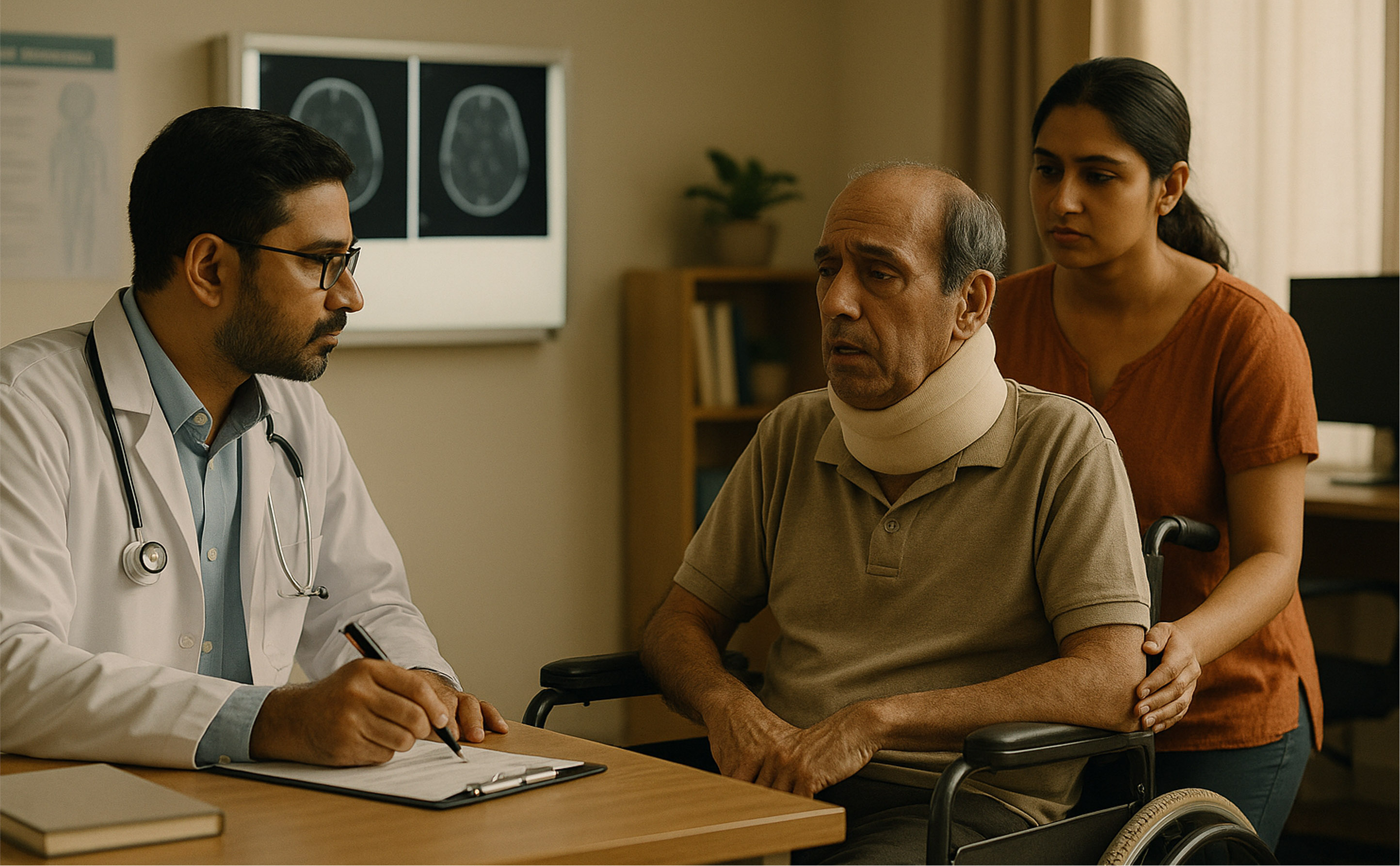
Symptoms vary depending on whether Upper Motor Neurons (UMN) or Lower Motor Neurons (LMN) are affected. Early symptoms are often mild and may be ignored. It is more common in people aged 60s and 70s, but can occur in anyone.Diagnosis
Motor Neuron Disease (MND) affects motor neurons, leading to progressive muscle weakness and atrophy. Early symptoms, such as limb weakness, stiffness, clumsiness, or difficulty speaking and swallowing, can be subtle, making timely diagnosis challenging.
Diagnosing MND requires a thorough approach, including clinical assessment, medical history review, and tests to rule out other conditions. Electromyography (EMG) and nerve conduction studies are key tools, while imaging and blood tests help exclude alternative causes. Early and accurate diagnosis ensures appropriate care and support.

Electromyography (EMG):
Detects abnormal muscle electrical activity
Nerve Conduction Studies:
Evaluates nerve signal strength and speed
Transcranial Magnetic Stimulation (TMS):
Assesses upper motor neuron function
Magnetic Resonance Imaging (MRI):
Excludes other neurological conditions
Blood Tests: Rules out other illnesses and checks markers like creatine kinase
Early symptoms of MND, such as weakness or difficulty speaking, can be subtle. Timely diagnosis through assessments and tests ensures patients receive care and support as soon as possible.
A diagnosis involves ruling out other conditions through a combination of clinical assessment and tests. Some key diagnostic tools include:
1. Electromyography (EMG):
2. Nerve Conduction Tests:
3. Transcranial Magnetic Stimulation (TMS):
4. MRI (Magnetic Resonance Imaging):
5. Blood Tests: